With a striking green and black signature colourway, the DVO ONYX does things differently. A rider owned, rider run company, can they deliver against the suspension heavyweights?

The DVO Onyx SC D1 is DVO’s top-of-the-line enduro platform, aimed at racers and hard hitters who think the DVO Diamond isn’t burly enough. Weighing in at 2.34 kg, the Onyx D1 fork features 36 mm stanchions in a burly chassis. The fork features six-position low-speed compression adjustment and over 30 clicks of high-speed compression – in theory, as the detents are very hard to feel when setting up the fork. The DVO Onyx is full of intelligent design: a compression bladder surrounds a larger volume of oil than most forks, claiming to boost durability and damping consistency. However, the highlight of the fork is certainly the OTT (Off The Top) feature, which comprises an preload adjustable negative coil spring that acts against the positive spring. Increasing OTT spring pressure reduces the breakaway force needed to get the fork moving, increasing the sensitivity. In theory, this gives a lot of easy-to-adjust control over the initial part of the travel, allowing you to move between bump-eating plushness, to jump-friendly support. If you’re a tinkerer, you will love the DVO Onyx, as the shim stack controlled damping circuit encourages custom tuning. However, just as easily as you can tune a fork to better suit your requirements, you can also tune it to be worse and ultimately, very few riders will feel the need to open up their forks and get the precision tools out.
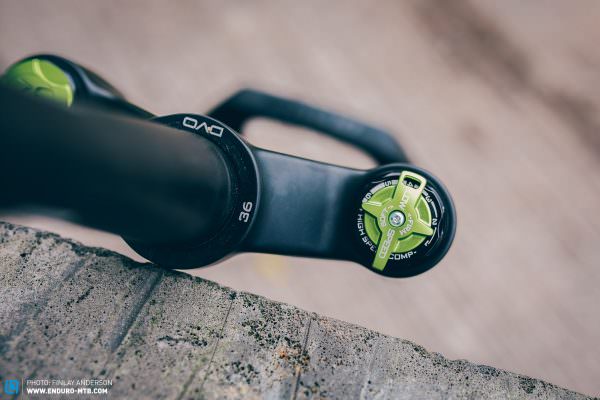
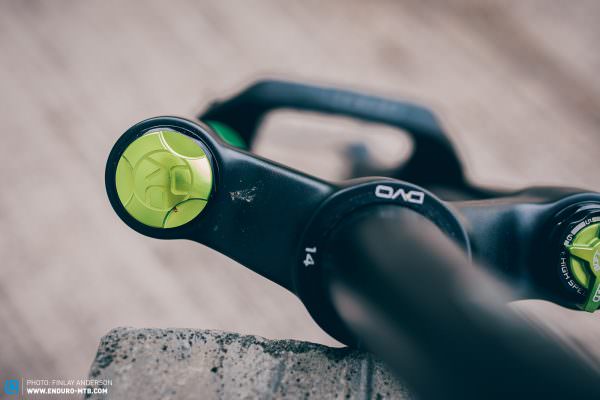
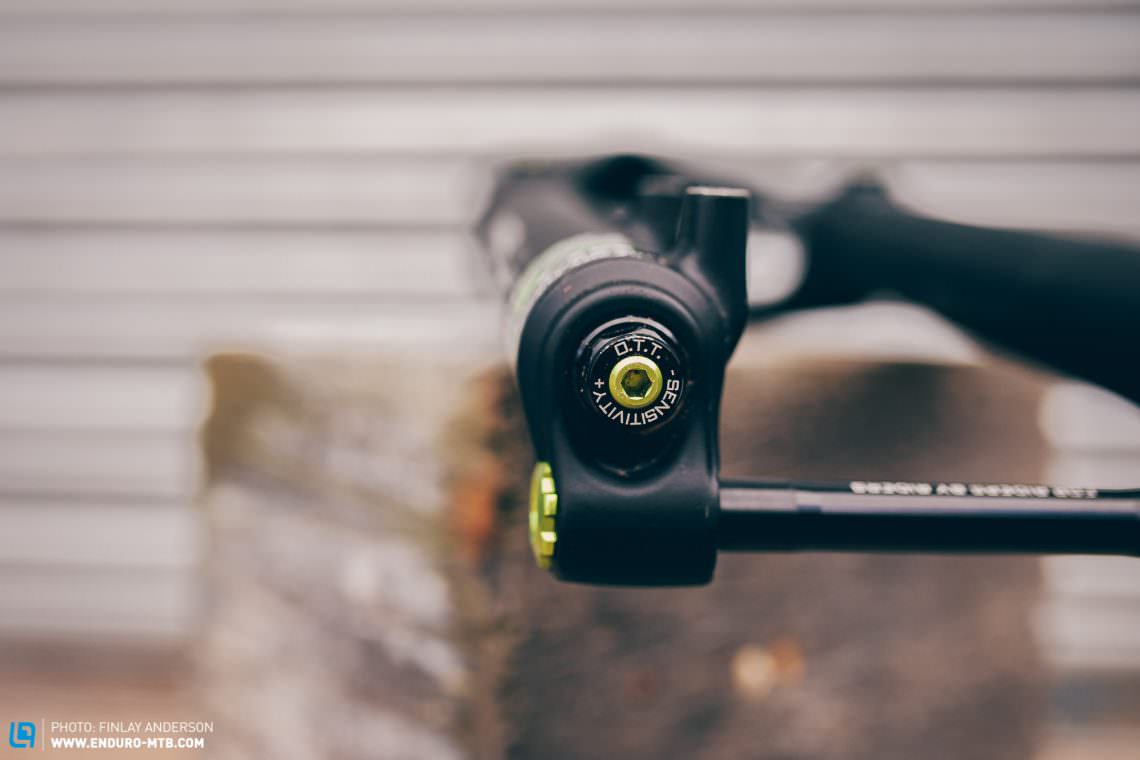
Setup of the DVO Onyx SC D1
Setup of the DVO Onyx SC is relatively straightforward. There are no pressure tables on the fork legs, but DVO offers an excellent tuning manual online, with starting points that offer a good ballpark setting. We did encounter a few unexpected issues with the DVO, mainly the high-speed compression dial which is stiff to operate and has hard to feel the detents. On that note, nobody needs 30 clicks of high-speed compression adjustment. Aside from that, the DVO Onyx is quick and easy to set up and we were able to get good performance within an hour of tuning. Experimenting with the O.T.T control, all testers prefered a setting near to maximum sensitivity.
The DVO Onyx SC D1 on the trail
Initially, the Onyx felt a little sticky when first fitted, while not evident on the trails, it wasn’t the smoothest in the car-park. However, the seals broke in after a few days of riding, highlighting the close tolerances that DVO are working too. During the shuttle days, the DVO Onyx was a real surprise performer in this group test. Once we had balanced the high- and low-speed compression to get the mid-stroke support and spring rate that worked best for us, the fork started to shine. Very stable through rock and root gardens, the DVO delivers enough travel without blowing through its travel on jump faces or diving on steep slopes. Adding additional OTT preload increased the sensitivity of the fork and at the extreme end, gives a very coil-like feeling, glueing the front end of the bike down through roots and chatter. However, that does end up lowering the ride height. We were impressed that the OTT has minimal effect on the mid-stroke, so you can have extreme sensitivity without blowing through the bulk of travel if we took a bad line. Chassis stiffness was on par with the Lyrik and we never felt that we could not hold a line that we wanted. However, it’s no lightweight. Yes, the DVO has excellent performance and a heavy-duty feel but for an air fork, it’s simply heavy. Does this increased weight come with a performance benefit compared to the Lyrik or FOX 36? We would say it’s equal at best.
Chassis stiffness was on par with the RockShox Lyrik and we never felt that we could not hold a line that we wanted. However, it’s no lightweight.
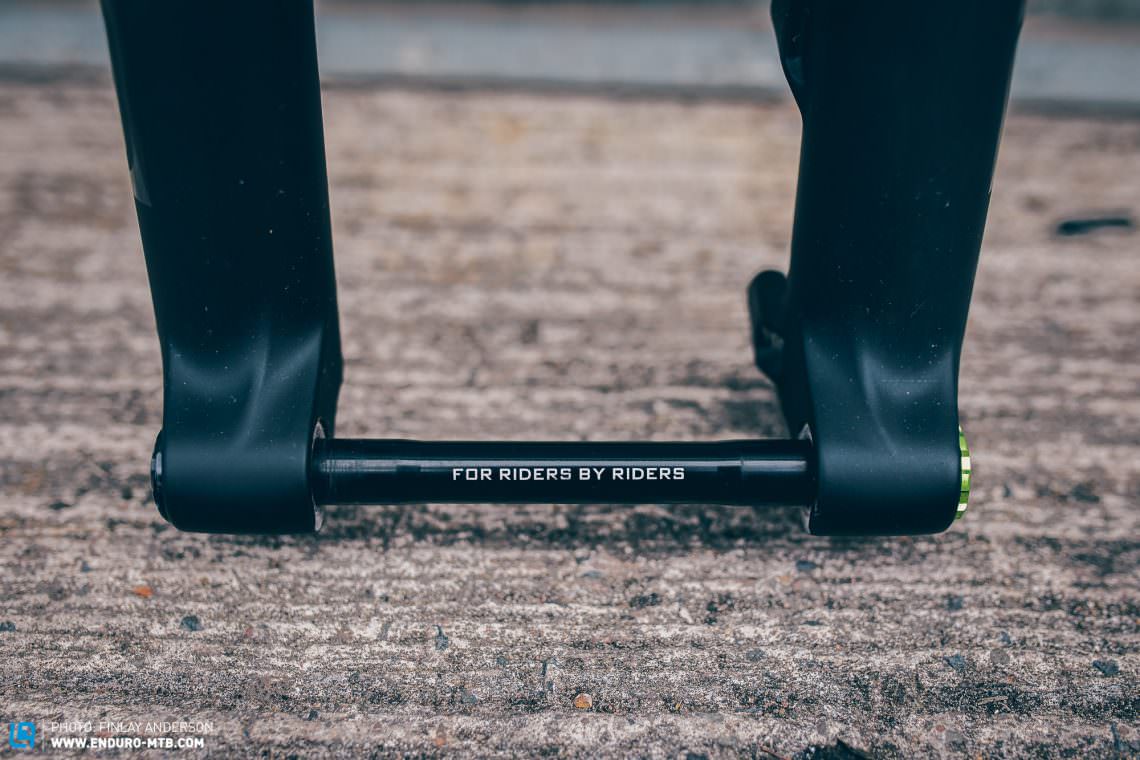

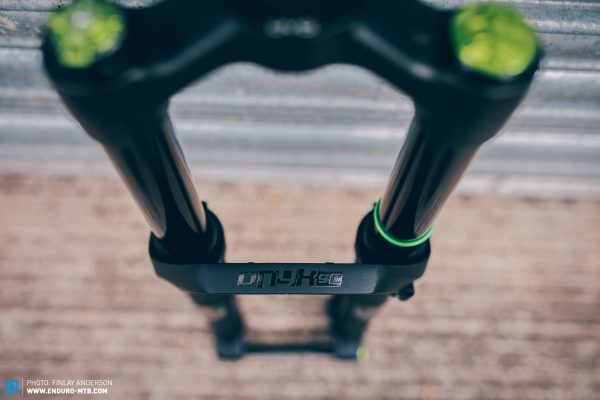
How does the DVO Onyx compare against the competition?
The DVO Onyx SC D1 is a potent performer, equal to the FOX 36 and RockShox Lyrik. We found we had more small bump sensitivity than the Ӧhlins and Manitou forks and excellent mid-stroke support. However, it is significantly heavier than its direct competition, without offering more performance.
Conclusion
The DVO Onyx SC D1 is a potent performer with a stiff chassis and OTT control that allows you to fine-tune the sensitivity without compromising support. The fork feels very well made and ridden back to back, delivers a similar ride quality to the Best Buy award-winning RockShox Lyrik. However, it does come with a weight penalty, putting it into ZEB and FOX 38 territory, where it ends up outclassed in big hit terrain. If you’re looking for something different and something you can custom tune, then the DVO Onyx will not hold you back.
Tops
- effective damping performance
- OTT works really well
Flops
- HSC klicks are overkill and hard to use
- coil performance, coil weight
For more information, check out the Manufacturer’s website. If you want to learn more about mountain bike forks and see how the DVO ONYX SC D1 stacks up against the competition, check out our 2021 suspension fork group test!
All forks on test: DVO Onyx SC D1 | FOX 36 2021 Grip2 Factory | FOX 38 2021 Grip2 Factory | Manitou Mezzer PRO | Marzocchi Bomber Z1 Coil | MRP Ribbon Coil | Öhlins RXF36 M2 Air | RockShox Lyrik Ultimate 2021 | RockShox ZEB Ultimate
Did you enjoy this article? If so, we would be stoked if you decide to support us with a monthly contribution. By becoming a supporter of ENDURO, you will help secure a sustainable future for high-quality mountain bike journalism. Click here to learn more.
Words: Photos: Finlay Anderson









